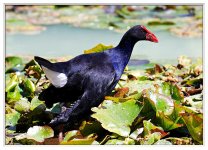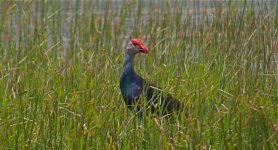Thursday (4th) was a public holiday here in Hong Kong (for Ching Ming), but I was on duty. Sitting at my desk I heard one of the sounds of summer arrive on the reserve - the first Indian Cuckoo (#184) of the spring, which remained out there for most of the day.
At lunchtime I headed to the mudflat hides to check out the waders. These are arriving in really good numbers now. There was a single Ruff (#185) among the Marsh Sandpipers. A small group of Little Terns (#186) had also arrived.
Bird of the day though was a bird I saw twice, but unfortunately only a very brief glimpse on both occasions. The second time was just about enough to confirm Ferruginous Flycatcher (#187), but was really not a good view!
To make up for the duty day on Thursday, I actually had the day off on Friday. But I knew there were really good tides in both the morning and afternoon and decided to head up to the reserve anyway. A single Ashy Minivet (#188) just before I reached the car park was followed by a flock of 10 flying over the mangroves.
The big surprise for the day was on the mudflats - an Eurasian Oystercatcher (#189). This may not seem exciting for those of you based in Europe, but with only about 5 HK records, this was a great bird to find. It showed really well on the morning tide, and then even better in the afternoon!
Also on the afternoon tide were five Red-necked Phalaropes (#190), while Gull-billed Terns had increased to about 150, Spotted Redshanks to 180 and Black-winged Stilts to over 200. The Black-tailed Godwit flock is also in god numbers this year - a count of 2,500 reported in the week is a record for HK.
An indication of the importance of Mai Po for migrant waders was apparent by looking for leg-flagged birds. Over the course of Thursday and Friday, I managed to find birds with leg flags from Western Australia, Victoria, Thailand, Chongming and Taiwan.
Friday finished with a flock of five Pale Martins (#191) heading over the reserve, presumably to roost in one of the reedbeds.
So that's eight new species in two days. You have to love migration time, don't you?







